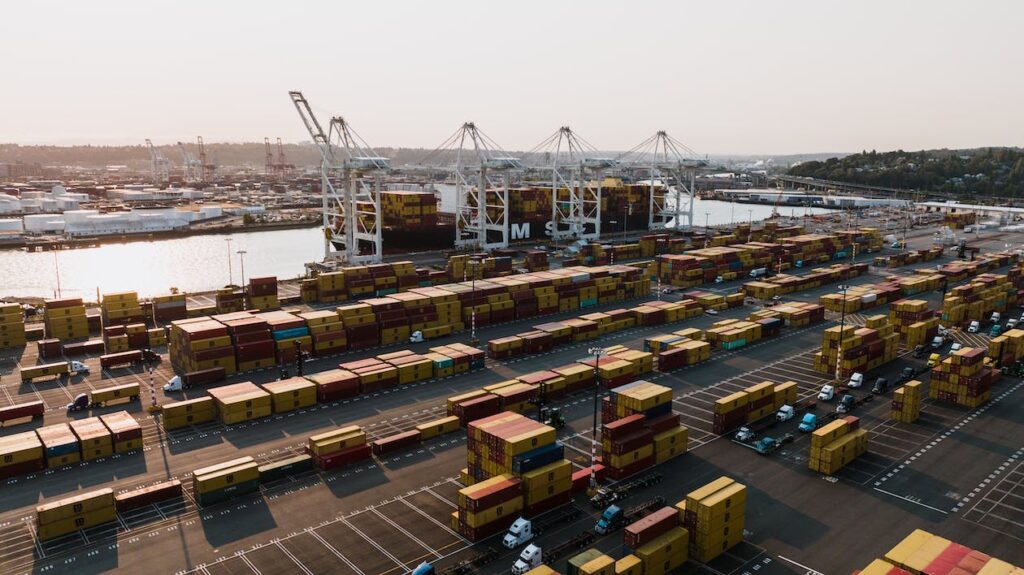What Are The Consequences Of Ignoring Supply Chain Value For Businesses?
What happens when businesses disregard the value of their supply chain? Explore the potential consequences of neglecting this critical aspect.
The supply chain encompasses the end-to-end flow of goods from sourcing to production to distribution to customers. Optimising this value chain is essential for business success in today’s complex markets. However, many companies still underestimate the strategic value of supply chain management. A lack of executive focus on maximising supply chain value can significantly undermine competitiveness, growth and resilience. This article explores the major consequences UK businesses face from ignoring supply chain optimisation and how this lost value impacts bottom lines.

Missed Cost Reduction Opportunities
Supply chains account for a major share of total costs for companies, especially in manufacturing and retail. There are tremendous opportunities to improve cost efficiency across transportation, inventory, warehousing, procurement and logistics administration. But often, supply chain costs are accepted as a given instead of an area for strategic gain. Failing to continuously re-engineer and optimise supply chain processes results in wasting millions in unnecessary expenditure every year. The savings lost from sub-optimal routing, overstocking, inefficient freight contracting and lack of visibility amount to significant erosion in potential profit margins.
Lower Productivity and Asset Utilisation
An end-to-end view of the supply chain reveals many bottlenecks that hamper productivity. Be it production scheduling, cross-docking, pick-pack systems or distribution networks, critical analysis helps spot constraints. Addressing these gaps through solutions like process redesign, capacity expansion and automation increases output and speeds up cycle times. Data-driven insights into storage, transport and shelf space utilisation improve asset sweating. Overlooking such productivity gains means below-par asset turnover ratios. Suboptimal supply chains directly translate into lower revenues and profitability for businesses.
Declining Reliability and Quality
Unreliable supply chains lead to stock-outs, delays and product quality issues resulting from mishandling. This frustrates customers and erodes the brand’s reputation. Without examining end-to-end risks from suppliers to logistics partners, vulnerabilities remain unaddressed. Lack of redundancy plans for supply disruptions also hurt customer service levels. However reliable supply chains cannot be built without understanding the value at risk. A piecemeal approach ignores how poor quality control at one stage impacts final delivery. Thus, supply chains that disregard end-to-end integrity underperform in consistency and quality.
Lower Competitiveness
Easy movement of goods internally and across borders enables companies to expand into new markets and geographies. Sophisticated logistics capabilities allow the customisation of offerings and faster order fulfilment. However outmoded distribution models result in unsatisfied export orders and overseas growth opportunities. Domestically, inferior supply chain services prevent matching competitors’ cost efficiency, variety and innovation. Unless businesses recognise the strategic edge efficient supply chains offer, they lose ground to rivals who continue upgrading logistics capabilities. Supply chain improvements are necessary to unlock international expansion and keep domestic market share.
Ineffective Sustainability Efforts
With rising concerns around the environmental impacts of supply chains, many corporations announce sustainability targets. However, a narrowed view of transportation emissions alone often guides strategy. This overlooks energy usage and waste across warehousing, packaging and inventory storage. A lack of accurate carbon accounting also leads to underestimating the overall footprint. Piecemeal sustainability initiatives along a limited portion of the chain deliver insignificant reductions compared to the potential of a systemic approach targeting hotspots across procurement, manufacturing and distribution.
Vulnerability to Disruptions
In an interconnected world, supply chain risks span geographies from climate events to conflicts. Without mapping upstream and downstream risks, companies remain unaware of vulnerabilities. A localised crisis can rapidly cascade across the entire value chain. Lack of visibility, redundancy plans and supplier diversification magnify disruptions. However, most businesses focus solely on first-tier supplier risks and immediate contingencies rather than second/third-order impacts. This leaves organisations dangerously exposed to sudden shocks that can paralyse operations temporarily or permanently.
Compliance Gaps
With global supply chains, businesses must comply with regulations across multiple jurisdictions covering product standards, chemicals, waste disposal, emissions, labour policies and data protection. Violations due to oversight or ignorance incur heavy penalties. However limited supply chain visibility hampers monitoring adherence by upstream partners. Governance gaps also undermine ethical sourcing initiatives critical for brand reputation. Proactively identifying and resolving compliance gaps is essential to avoid expensive lawsuits, contract terminations and loss of consumer trust.
Barriers to Innovation
Maximising supply chain value requires reimagining traditional models to find innovative solutions using technologies like AI, IoT sensors and blockchain. But change is difficult when functions operate in silos. Lack of data sharing on pain points and ideas between teams also hampers co-innovation. Companies who view the supply chain narrowly as a cost centre provide limited scope to explore improvements. They remain wedded to legacy processes and miss potential from emerging logistics business models. This impedes the development of breakthrough solutions for efficiency, sustainability and customer service.
Conclusion On Supply Chain Value For Businesses
The cumulative impact of these consequences from ignoring supply chain value manifests in lower profitability, negative brand perception and long-term decline. As markets get more competitive, businesses cannot afford to remain stuck with outdated supply chain capabilities. To leverage supply chains for strategic advantage, organisations must bring strong leadership commitment and adopt an end-to-end lifecycle mindset. This systemic approach identifies hidden costs and risks while unlocking opportunities for maximising value. Supply chain excellence will separate the winners from the rest in the future global economy.
Contact Us
We are here when you need us. Get in contact to see what we can do for you
Contact Us